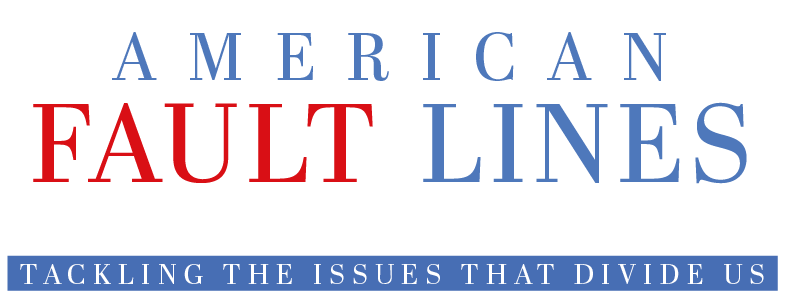SEPTEMBER 1, 2016, 6:58 PM
EVERETT, Washington — Maybe it was jet lag. But the scene seemed a bit surreal: the African-American hawker selling “Donald ‘Fucking’ Trump” buttons, the young Hispanic guy with the “Build a Wall” T-shirt, the grinning fellow of Chinese descent strategically placed behind the podium.
I had stepped off a flight from the United Arab Emirates just 12 hours earlier. Now, improbably, I found myself at a Donald Trump rally. I had expected the sea of white faces — flecked with camo, Confederate flags, biker leather, and National Rifle Association logos — in the crowds, eagerly awaiting their hero. But the fact that the majority of the Trump supporters were polite and well-dressed, not a bunch of obscenity-screaming loonies, and included a few assorted people of color, had me wondering if I wasn’t suffering the effects of sleep deprivation.
I was jolted back to reality the moment the Republican nominee came into the arena. I have spent the past two weeks in Pakistan and the Middle East, steeped in the geopolitical complexities of the region, a place painted in shades of gray. Now I was back in Trump’s world of black and white.
I have spent the past two weeks in Pakistan and the Middle East, steeped in the geopolitical complexities of the region, a place painted in shades of gray. Now I was back in Trump’s world of black and white.
“We are going to stop the Syrian refugees from entering the United States,” Trump proclaimed to a thundering, foot-stamping ovation. “Did you see where they announced today tens of thousands of people coming in?”
In fact, the administration had announced the arrival of the 10,000th refugee the day before, meeting the target for the year. But as Trump continued to rile up the crowd, I was soon reminded that facts don’t always have a place in his world order of fear and loathing. “We allow people to pour into our country. We don’t know who they are, but it’s only a matter of time before bad, bad things are going to happen,” he warned.
I thought about the conversation I had with a hard-line Muslim cleric a week before, who told me that he had the solution to Trump’s concerns about Syrian refugees: “America should go in and stop the fighting,” Mufti Muhammad Naeem said, as we sat sprawled against pillows on the pristine white carpet of his air-conditioned office. Naeem is the head of Jamia Binoria, a madrasa considered the most important center of the fundamentalist Deobandi school of Sunni Islam in Pakistan. In the dusty, flyblown 15-acre complex outside his oasis-like office, more than 5,000 students — from young Pakistani children to Ph.D. students from the United States, Europe, and across the Muslim world — were studying an extremely conservative interpretation of Islam.
Naeem is no shrinking violet. Just last year, he issued a fatwa against a government minister, accusing him of apostasy, a virtual death sentence in Pakistan. Given that his fundamentalist colleagues were inflamed by the U.S. presence in Afghanistan and Iraq and the ongoing drone strikes in Pakistan itself, I asked, why would he want the United States to intervene in Syria? “America is powerful; it can do anything it wants. It can solve these things if it wants to,” he confidently replied.
This from a man who is banned from entering the United States because of his alleged support for attacks on Pakistani Shiites. Which is exactly why he wants the United States in Syria: to oust Shiite Iran’s ally Bashar al-Assad and drive out the hated Shiite militia Hezbollah, paving the way for a Sunni regime. The conversation was a reminder that nothing in what George W. Bush once dubbed “the greater Middle East” was straightforward.
You would never know that listening to Trump. Back at the rally, the New York businessman was now reciting lyrics to Al Wilson’s song “The Snake,” which he said was the perfect allegory to the threat posed by Syrian refugees. In the song, a sympathetic woman rescues a half-frozen snake, only to be bitten by it in the end. When she asks why, the snake tells her she shouldn’t be surprised because: “You knew damn well I was a snake before you took me in.”
“It represents the truth,” Trump told the cheering and laughing crowd. The “tidal wave” of Muslim immigrants, he said, repeating a common theme of the campaign, “could be the great Trojan horse of all time.”
And, naturally, it was all Crooked Hillary’s fault.
“Look at the world before and after she became secretary of state,” Trump continued. “Pre-Hillary, in early 2009, Iraq was seeing a reduction in violence, Libya was stable, Syria was under control, the group we now know as [the Islamic State] was close to being extinguished, Iran was being choked by sanctions.”
Well, kinda, sorta. Hillary Clinton certainly bears much responsibility for the chaos in Libya, in pressing for the U.S. intervention, which was launched with no serious plan for what came next. But that intervention also prevented the slaughter of countless Libyans by dictator Muammar al-Qaddafi and ultimately led to his demise. And sanctions against Iran were actually tightened in 2012, costing Iran $160 billion in lost oil revenue alone over the next few years, according to U.S. Treasury Department figures.
Trump’s account of a pre-Clinton Middle East utopia leaves out the seminal events that have shaped the region today: the Bush administration’s invasion of Iraq and a little something called the Arab Spring. The overthrow of Saddam Hussein tore Iraq asunder and made Iran the dominant regional power. The 2011 Arab uprising, which the United States could not have stopped even if it had wanted to, unseated two dictatorships and sparked an authoritarian counterstrike from Bahrain to North Africa. The brief flirtation with democracy gave way to today’s blood-soaked Arab Winter and the rise of Islamic State.
That got me thinking about the Jordanian investment banker I had been drinking with at the in-pool bar of a luxury Dubai hotel a scant 36 hours before Trump took the stage. Between shots of tequila and bottles of Corona, he confided that although he didn’t really like Trump, he thought the real estate tycoon was the only one who could save the world economy because “he won’t mess around — he’ll just order people to do things, and they’ll get done.”
So much for wild-eyed Muslim fanatics.
That launched him into a paean to the good old days of Arab dictators. Saddam Hussein and Hafez al-Assad knew how to run a country, the former Citibank executive recalled wistfully, referring to the late dictators of Iraq and Syria. “Democracy doesn’t work in our culture,” he continued, warming to his subject. “We’re used to authority. No matter how old you are, when your father tells you to do something, you do it. They hold the squabbling family together, and the dictators held those countries together. People in those countries were safe.” Except, of course, for political dissidents having their genitals electrocuted, I pointed out.
But he did have a point. From Dubai, the glittering, mega-rich business capital of the Arab world, no matter which direction you look, there is chaos. In Yemen, the Saudis and Emiratis are locked in a bloody proxy war with Iran. Thirteen years after the American invasion, Iraq remains a sectarian basket case. Syria is likely to remain a failed state for the next generation.
Immersed in the sound-bite culture of a presidential election campaign — particularly the stream-of-consciousness lunacy of Trump — it’s easy to forget that the world is a really complicated place. To be fair, in one of his more trenchant foreign-policy pronouncements, Trump once proclaimed, “The Middle East is one big, fat quagmire.” He got that right. But then in March he said the United States needs to send upwards of 30,000 troops to the region to fight the Islamic State, only to announce this week that rather than direct intervention, he wants to set up refugee safe zones, paid for by the Persian Gulf emirates. There’s an actual policy in there somewhere.
In the region itself, the overarching confrontation between key Sunni Arab states and Shiite Iran, which plays out in all the region’s conflicts, dominates the narrative. There is genuine fear in the palaces of the Gulf that some inadvertent incident will spark a direct military confrontation. But what really keeps Gulf leaders awake at night is the existential threat posed by the Islamic State, known there by the pejorative Arabic acronym Daesh.
“Iran is tangible and external,” a senior Arab journalist with regular access to the region’s kings and emirs told me. “Daesh is of them,” he continued, meaning Gulf Arabs are among its recruits. “It’s right here in the sand. It can appear from anywhere.” Among Trump’s plan-of-the-week strategies against the Islamic State tossed out during the debates, the “bomb the shit out of ‘em” approach is problematic, to say the least, if implemented amid the glistening skyscrapers and ornate palaces of the Gulf emirs.
Complicating the creation of a coherent Middle East strategy even further, the twin threats of Iran and the Islamic State have shuffled the deck of regional power alliances. Israel — once so reviled in the Arab world that it was referred to only as the “Zionist entity” — now regularly meets secretly with Saudi Arabia and the other Sunni states to share intelligence on their common enemies.
Just across the Gulf of Oman in Pakistan, which Trump once called the “most dangerous” country in the world, the government is trying hard to avoid getting caught in the middle of the confrontation between the Gulf states and Iran, which borders Pakistan to the west. Islamabad has enough problems in its own neighborhood: the endless confrontations with India (which Trump expects to be “helping us out” in securing Pakistan’s nuclear weapons if the country becomes unstable, an invitation to regional chaos); civil war with domestic militant groups (while cynically supporting others); a revolt in Baluchistan; the Kashmir conflict; open hostility from the Afghan regime; and a military operation against the political party-cum-criminal gang that runs the commercial capital of Karachi.
The complexity of it all is enough to make your head spin.
Back in Everett, the crowd was chanting, “Trump! Trump! Trump!” Maybe the GOP nominee is right, I thought, longing to go catch up on my sleep. Just build a wall.
Photo credit: Xinhua/Bao Dandan via Getty Images
Lawrence Pintak is an award-winning journalist and scholar who was the founding dean of the Edward R. Murrow College of Communication at Washington State University. A former CBS News Middle East correspondent, Pintak has covered dozens of wars, conflicts, coups, and revolutions on three continents. His latest book is America & Islam: Soundbites, Suicide Bombs and the Road to Donald Trump.
Twitter: @lpintak


